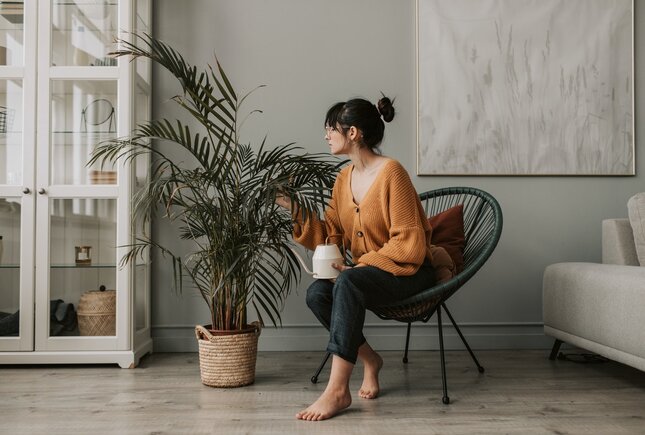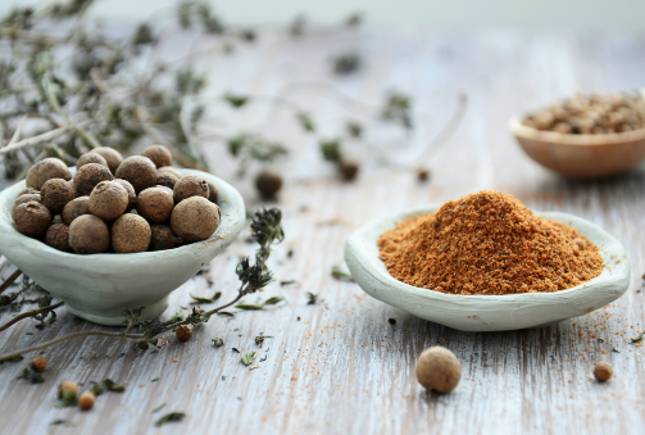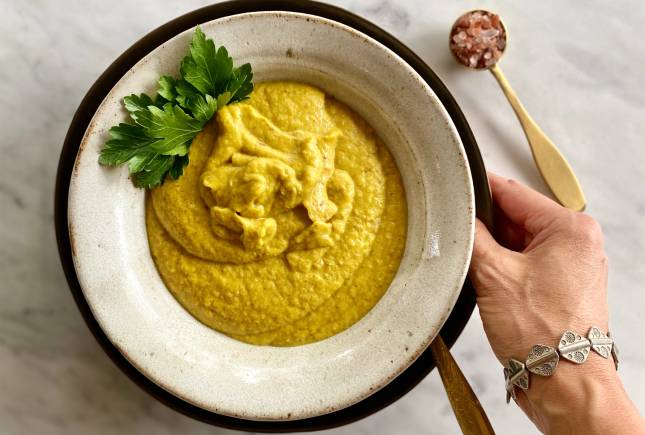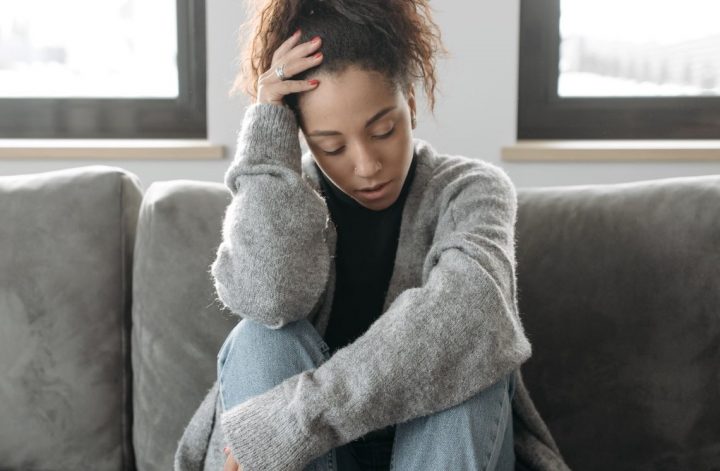Welcome back to ‘Stress Less 101’. In the previous post we looked at the first 6 ways to reduce stress and anxiety. they were all easy, simple and free! In this post, I’ll share the next 6. You’ll find the second Recipe for Daily Bliss here too: a step by step guide to living a calm and connected life starting now…..This time it’s more based around the latter part of your day. So all you moon-folk, this one’s for you :)….
I’m back in my writers chair again. It’s a comfy emerald green West Elm classic lined with velvet, with an extra cosy sheepskin thrown over. Comfort makes all the difference right?! Today’s been pretty blissful with half of my day dedicated to reflection and I’m ready and excited to share with you another 6 ways to find calm in your everyday. Simple things you can do to relieve stress, anxiety and depression and just feel well. We’ll also look at ways to lovingly self-connect and nourish.
7. Schedule CALM time
This one’s all about creating space for calm in your life. Do you feel like you prioritise calm? For some of us, we keep saying “I don’t have time”….and hearing that repeatedly in our own heads exacerbates our stress and anxiety. Calming doesn’t actually take a lot of time, but it does require intention and presence. Before you sleep, spend a minute jotting down three things you can do the next day that are calming. Use the free printable planner below if you like.

See the Calming list here? Just three things. Make them easy things, like belly breathing and chamomile tea. For example, putting your feet on grass is 5 minutes of your morning. A single minute of belly breathing on the hour takes something like 8 – 10 minutes max out of your working day. And cloud gazing, how about combining that with your morning barefoot walk. Or save it for the late afternoon when the skies are pink and dreamy and you’re transitioning towards dinner.
Suffice to say, I’m only talking about 15 – 20 minutes a day to create and maintain a calming practice.
So that’s one part of step 7 – devising your calming activities for the day. Then there’s the Gratitude list, a tool used to support healthy mood and motivation and reduce anxiety. Each day, write down three things that you’re grateful for. Anything at all that made you smile, lifted your mood or made your day!

I spent this morning at the beach with the family. It was windy and I had goose-bumps, but the sound of the waves was pretty special. This afternoon there were 3 or 4 kookaburras in the spotted gum tree next to my house, I was grateful to see them there in all their feathery splendour.
I also heard scientists have developed a cure for spotted gum fungus which was exciting. I would have added that in too but there wasn’t enough space :)!
One more thing on the topic of planning your day:
“Do not do more today than you can completely recover from by tomorrow.”
Sage advice Greg! Thought I’d throw that one in because in this day and age of over-efforting and exhaustion I feel it’s remarkably apt!
The PDF below has both the Calming list and the Gratitude list. Try taking a moment of your evening to strategically plan the next day ahead and make it as effortless and nourishing as possible. Enjoy!
8. Repair those frayed nerves with Turmeric

Turmeric rhizome. Photo: Sulin Sze
With more than 4,000 years of use as a medicine and functional food, turmeric makes every meal just that little bit healthier for body….and for mind. I love tossing chopped potatoes in a mixture of turmeric, oil and salt and then baking. You can also add turmeric powder to breads, baked goods, rice, broths, lattes and smoothies. What can’t you add it to?? The qualities of turmeric are pungent so it best suits foods designed to warm you from the inside out like curries, hot drinks and stews. Curcumin is the principal constituent in Turmeric (Curcuma longa) rhizome and most studies use extracts of curcumin.
Over the past 50 years a flurry of scientific studies on Turmeric have been emerging, demonstrating its beneficial effects in diabetes, arthritis, ulcerative colitis, drug addiction, fatty liver, skin disease, stroke and cancer. The list is extensive. One area I find intriguing is the effect of Turmeric on brain health, leading to improvements in anxiety and depression.
Research shows that Turmeric actually reverses the damaging effects of chronic stress on our adrenal glands and our stress-regulating system, the ‘HPA axis’ (Hypothalamic Pituitary Adrenal axis). This is great news for stress-heads, because in simple terms, it means Turmeric can help rebuild a tired, stressed-out adrenal system. The studies prove this at the cellular level where adrenal cortex increases in thickness and adrenal gland size and weight normalises after treatment with turmeric. These effects are especially relevant to stress-induced anxiety. In one study, participants took 1g curcumin daily showed significantly lower anxiety scores after a period of 30 days.
Beyond these restorative effects on the nervous system, curcumin has also been found to protect neurons from damage in the first place, making it a ‘neuroprotective’. Studies show it to be useful in conditions like Alzheimer’s disease and Major Depression because of this neuroprotective activity. How does Turmeric protect neurons? It has an anti-inflammatory effect on the central nervous system and it inhibits reactive astrocyte expression which helps to prevent cell death.
Here’s another great reason to use Turmeric to take the edge off: In the brain where a complex orchestra of chemicals known as neurotransmitters (like serotonin and dopamine) relay messages throughout the body, coordinating movement, perception and mood. Curcumin modulates the release of these neurotransmitters which improves mood and stress tolerance.
Curcumin also stimulates release of brain chemicals that encourage cell growth and differentiation. One of these chemicals is brain-derived neurotropic factor (BDNF), an important molecule for learning, memory and brain plasticity. Abnormal brain plasticity is thought to be one of the major adverse effects of chronic stress.
One more thing about turmeric. Remember in Part 1 we looked at the stress-inducing effects of a high sugar diet? Well if you happen to have high insulin or high blood glucose levels, it might be worthwhile making friends with Turmeric. Studies show it improves insulin function and thus can lower blood sugar levels. It’s usefulness in diabetes and metabolic syndrome has been a key point of interest in much of the scientific research on Turmeric.
Other health benefits of Turmeric include:
- Increasing antioxidant activity
- Lowering brain damage markers in the blood
- Reducing amylase levels in the blood (a marker for acute stress)
- Reducing inflammatory cytokine levels (markers for inflammation)
- Fighting pathogenic infections
- Anti-tumour activity
Here are some fabulous ideas to work some turmeric-lovin’ into your diet:
- Mix up your own turmeric oil with some black pepper, salt and any other spices you like. (I recommend fennel and coriander seed). Have it ready to go whenever you’re cooking. Check out this amazing turmeric paste recipe at Fool Proof Living for inspiration.
- Make Turmeric gummies. Use my easy, 4-step gummy recipe here as inspiration. I’d recommend combining turmeric powder, lemon and honey for your gummies (‘pastilles’).
- On the sweet note here, try adding ½ tsp turmeric powder to your pancake mix and surprise the family with golden pancakes.
- Create a decadent sweet with turmeric chocolate. Head to my Magic Velvet Bean chocolate recipe and substitute the Magic Velvet Bean powder in the recipe with turmeric powder. Sooooo good!
- Create your own Golden Latte powder mix that you can add to hot water and/or milk for a warming, digestive healing drink. Try Lee Holme’s Tumeric Toddy recipe, it has that extra gut-healing touch you’ll love.
- Add turmeric powder to scrambled eggs, salad sauces, roast vegetables and soups
Note: Turmeric is heavily saturated with staining colours. Watch your marble benchtops 😉
A number of human studies have found curcumin to have poor bio-availability unless administered in a fatty substance so when you’re making those turmeric tatties, don’t forget the oil! When you make a turmeric latte, add some coconut oil or fatty milk and a pinch of black pepper (which contains piperine, a chemical that enhances curcumin absorption).
9. Zen out in your own microcosmic garden
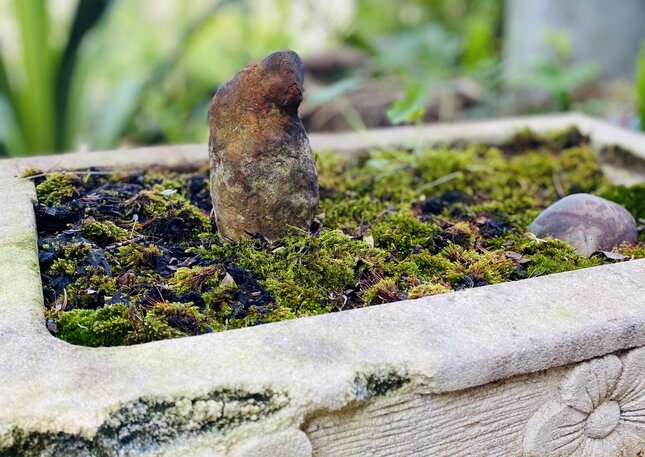
This little cutie took a few hours to create. Photo: Sulin Sze
Cue the delicately stringed Japanese Koto. Hear the rumbling resonance of a gong high on a steel-grey mountaintop in old Japan. Kind of like this.
We’re going back to the time of the first reigning Empress of Japan, Empress Suiko (554-628). It was around this period that the first Zen Gardens were created, and they continue to be a source of quiet contemplation, stress-relief and spiritual calm to this day.
Zen gardens are linked to Mahayana Buddhism, a spiritual movement that flourished in ancient Japan with, among other things, a positive outlook on life and a strong meditation focus. For the Buddhist monks, zen gardens were meditative sanctuaries with a minimal colour palette to reduce distraction and confusion. Here, one could quietly reflect on spiritual teachings.
The benefits of zen gardens include reducing stress and promoting relaxation, engaging creativity, improving focus and of course, improving mental health. They usually include mosses. Mosses are treasured plants in Japan and an integral feature in Japanese gardens for their cultural symbolism and aesthetics. They represent simplicity, refined beauty and the transient nature of life. You’ll find mosses featured in Japanese books, moss tours, museums even the Japanese national anthem. The Saihō-ji Temple in Kyoto is a Zen Buddhist temple famous for containing around 120 varieties of moss.
So in essence, the zen garden is a calming, spiritual place. It can be a tabletop version like mine, 50cm wide and filled with miniature hills of soft, spongy mosses and interesting rocks collected on South Coast beach vacations. Or it can be large enough to walk around in, with meandering stone pathways, water features, curved wooden bridges and blossom trees. I recommend the tabletop version because it’s much simpler to make and you can complete it in a few hours.
You can also create a zen garden without moss, water and soil. Instead, use gravel, sand or pebbles. Jump on the web and you’ll find DIY zen garden kits like the sand and stone variety. They usually come with tiny rakes that you can use to design spiral shapes in the sand, mimicking the look of water. Too easy!
So spend 15 minutes a day, or more if you like, gradually putting together a small zen garden of your own. The entire process from gathering small stones to looking in cool, quiet corners of the garden for a little patch of moss, is a calming and centering experience. It’s also a great thing to do in lockdown either on your own or with family. Kids will love the microscopic approach to the natural world.
10. Plant indoors

Snake Plant. Photo: Andrew Neel
Special offer in this section!
Are you a biophile? Do you feel a strong drive to intimately connect with the natural world? Kinda feel like I’m preaching to the converted here…if you love plants, why not sleep, eat, chill out and live with them?
Plant purification (one paper called it ‘phytoremediation of indoor air pollution’, love that!) is a big thing these days offering an economical, beautiful, effective and ecological approach to combatting air pollution. A key benefit here is cleaner air with more oxygen and fewer allergens in our living spaces. That alone reduces physical stress on your body.
What about mental stress? Simply engaging with plants has numerous stress-relieving effect such as suppressing sympathetic nervous system activity and reducing blood pressure. According to Dominique Hes (2020) “Simply adding one medium-sized plant to a medium-sized room improves air quality up to 25%. And when it comes to improving wellbeing, five or more plants leads to people feeling healthier and happier.”
A study by the University of Technology found that working, studying or living with plants can:
- reduce anxiety and tension by 37%
- reduce depression by 58%
- reduce confusion by 30%
- reduce anger and hostility by 44%
- reduce fatigue by 38%
- increase energy by 4.5%
Granted, not everybody can put up a green wall in their home, but most of us can find a Snake plant (Sansevieria trifasciata). This West African native filters the air to remove toxins, and can grow virtually anywhere; indoors, in shade as well as outdoors. A study on ‘sick building syndrome’ by NASA revealed that poor breathing is a result of poorly ventilated spaces, ultimately leading to a form of suffocation.
Snake plant was able to absorb harmful chemicals like formaldehyde, benzene, xylene, toluene, ethylbenzene and trichloroethylene. In one study, it removed 77% of the volatile compound benzene from the air in a 72 hour period. Benzene is a known carcinogen associated with leukaemias as well as headaches, skin irritation, drowsiness and tremors. During the night (as with many plants) it metabolises carbon dioxide to produce oxygen.
A 2020 study on the effects of Snake plant on office air quality showed a reduction in carbon dioxide levels of up to 19.29%. Other plants that have similar beneficial effects include the Spider Plant (Chlorophytum comosum), Devil’s Ivy (Epipremnum aureum)…noticing a trend with the names here (??). The top three medicinal house plants sound like they’d bite you in the dark! Heh heh.
Spider plants in studies removed up to 95% of carbon monoxide and 85% of formaldehyde from the air in a 24 hour period. They’re known for removing nicotine and harmful toxins from cigarette smoking too as well as chemicals released from rubber and leather products.
There’s the Peace Lily (Spathiphyllum spp)…that sounds a bit less threatening….which also filters ammonia and mold from the air. There’s Aloe Vera as well, it can remove up to 90% of formaldehyde, xylene and dust in a 24 hour period and absorb benzenes.
English Ivy removes hydrocarbons and makes a beautiful green wall. And if you’re looking for something super easy to grow, try Chinese Evergreen (Aglaonema modestum) which suits bedrooms particularly well. One of the best performers in the NASA Clean Air Study was the Bamboo Palm (Chamaedorea seifrizii). It removed the most benzene of all, four times more than the Peace Lily.
Among other factors like light qualities, bed materials, electromagnetic radiation (see step 11 next) and temperature, air quality is a strong determinant of sleep quality. Clean air is easier for us to breathe and removing toxins from the environment reduces our oxidative load and therefore our level of physical stress internally. Believe it or not, there’s even a science behind the positioning of indoor plants that purify your air. Crazy right?! Actually, not crazy at all. Go check it out!
Nothing excites me more than the prospect of turning my home into my own personal Amazon, if only hubby would agree ;). I admit to many a sunny afternoon being spent at the local Flower Power contributing to the 2 billion+ plants that Australians bought in 2020. And don’t let lockdown hold you back, you can head to the fully online store Plants in a Box to create your own combo of reasonably priced, Aussie-grown house plants lovingly packaged and delivered to your door.
Shade plants work best and plants need to be nourished and cared for to ensure they suit the room temperature and get a suitable amount of sunshine for photosynthesis. For more inspiration see this video by Summer Rayne Oakes.
For the complete list of plants studied in the NASA Clean Air Study find all the results here.
For all the plant nerds, check out this review on Indoor Medicinal Plants in the International Journal of Green Pharmacy.
And last but not least, a very special offer for you all, Plants in a Box are offering a 10% discount on your first order with them and they’ve got a fabulously large selection including lots of the plants covered here. Use the code DIGIT10
Enjoy plant Lovers!
11. Put your phone to sleep early

Photo: Vlada Karpovich
As cute as this picture is, I find myself re-envisioning this scene without the digital devices and I suddenly feel much calmer. You too? Devices (especially mobile phones) are seductive little things. They can make us so productive, and also….so unproductive. The lure of social media and that ‘just in case’ impetus that has you reaching for your mobile when you wake in the morning and when you’re getting into bed to go to sleep. We’ve all felt it, that desire to have one first/last check-in. How about two easy rules around device use:
Not first thing in the morning, and not last thing before bed.
With last weeks idea-rich post on my first top tips for achieving bliss and calm in your day, I dare say we’ve got the morning covered. Between the belly breathing, nature bathing, earthing and mantra you’ve really spoilt for choice there for daytime bliss-out! Just one extra one: try setting your phone to stay in sleep mode until you’ve had around 30 minutes to ease into the day, you won’t even know it’s there.
This post is more about evening and night, so here’s what the evidence says about smartphone usage before bed and why we should put our phones to sleep at least 30 minutes before our own bedtime. Smartphone usage before bed contributes to anxiety, low mood and sleep issues. It can also exacerbate psychological conditions already present like attention deficit disorder and depression. Smartphone usage before sleep is associated with:
- Increased stress
- Worsening ADD
- Disturbing sleep
- Reducing ability to think deeply or creatively
- Increasing feelings of loneliness
A 2021 study of smartphone use in university students found that bedtime usage of mobile phones worsened anxiety and depression, and was a key feature of ‘bedtime procrastination’. And it appears that smartphone addiction is more likely to affect people with a neurotic personality. So pretty much, most of us (!) especially as we traverse the shaky grounds of a global pandemic.
In a 2020 study of 574 medical students, the incidence of smartphone addiction was as high as 40.6%. As the levels of smartphone usage increased, severity of depression, anxiety, stress and neuroticism all increased. In a 2017 systematic review of the effects of problematic smartphone use (meaning ‘smartphone addiction’), researchers found depression was the most strongly affected psychological outcome, followed by anxiety and stress.
In another 2020 systematic review with meta-analysis (this time observing young people), the odds of experiencing depression, anxiety, stress and sleep difficulty were 2-3 times higher with problematic smartphone usage. These findings are supported by a 2021 cross-sectional study which also showed that people who are active during lockdowns are less prone to the detrimental effects of smartphone overusage. They found stronger links between smartphone usage and anxiety than other psychological parameters. You may not have a smartphone addiction…. but there’s never been a better time to reassess our device usage and create healthy patterns around it.
I recommend to all my clients to flick the switch on the mobile by 9:30pm. After this, it’s quite likely your adrenals will fire up again late at night, increasing vigilance and tiring out an already stressed body and mind. If you normally wake at 7am, you could set your phone to stay in sleep mode until 7:30 or 8:30, giving yourself lots of time to set yourself up for an amazing day before the ‘dings’ begin.
Make a note in your diary now and commit to it.
12. Create a bedtime ritual

Photo: Taryn Elliot
In this final step we’re shuffling into the bedroom and preparing for a really good nights sleep. This is a challenging area for many of us. Chronic insomnia (where initiating and maintaining sleep is persistingly difficult) affects 14.8% of adults in Australia and the prevalence increases as we age partly because melatonin (the sleep rhythm regulator) declines significantly by the time you reach 50. When poor sleep becomes habitual, we become more susceptible to a range of mental health and cognitive conditions. It’s a bit like that feeling of being jet-lagged and unable to focus and learn. Various studies and systematic reviews reveal how important sleep hygiene is to nervous system function. Sleeping between 7 – 9 hours brings:
- Improved life satisfaction
- Academic success in students
- Improved learning capacity
- Enhanced neuro-cognitive function
- Improved creativity
- Lowered anxiety
It’s what we do in the lead up to sleep that determines how well we’ll drift into and sustain, a restorative slumber. Creating your bedtime ritual is a way to set yourself up for deep sleep. I have a feeling you’re a bit of an expert now on tools and tricks for relieving anxiety (don’t forget to read Part 1 if you haven’t already) so I’ll suggest a ritual here, but you’ll likely come up with something even better. Please share in a comment if you do, I’d love to hear what you do!
So here’s my Inspired Bedtime Ritual that you can follow to the T or just use as a starting point for your own version.
- Dose up! Take sedating or calming supplements and herbs in the evenings, after dinner or before bed. I love Magnesium, Valerian and Passionflower, but really, there’s so much you can do herb-wise to assist with sleep. Think about booking in a consultation with me if you’re looking for solutions to sleep problems. Details on those three recommendations are below.
- Enjoy a nice, warm soak in a bath filled with Epsom salts, aromatic flowers and a dash of essential oil.
- Keep the bedroom cool (temperature-wise), it makes for a better nights sleep
- Avoid using the computer in bed
- Lengthen your out-breaths. Using a breathing method like 2 counts for the inbreath and 4 counts for the outbreath for 5-10 minutes at a time
- Try a relaxation technique of some sort before sleep such as autogenic training, shaking meditation or breathwork.
- Get the recommended amount of sleep for your age-group. People who habitually have less than average sleep duration are more likely to develop neuroticism, anxiety and worry. So it’s worth checking on.
The National Sleep Foundation recommends the following hours of sleep for different ages:
- 0 – 11 mths need 12-17 hrs/day
- 1 – 2yrs need 11-14 hrs/day
- 3 – 5 yrs need 10-13 hrs/day
- 6 – 13 yrs need 9-11 hrs/day
- 14 – 17yrs need 8-10 hrs/day
- 18 – 64yrs need 7-9 hrs/day
- 65+ yrs need 7 – 8 hrs/day
Magnesium, Valerian and Passionflower
- Magnesium. Low magnesium levels are associated with anxiety and poor sleep quality. Some of us may have enough initially, but we burn it quickly as it’s a co-factor in so many essential metabolic reactions in the body. Evidence on the use of magnesium for sleep is mostly of poor quality or the trials are low-powered (meaning, not many participants). A 2012 trial revealed improvements in sleep latency, sleep length, tendency to early morning waking and sleep efficiency. Try 500mg daily for a start, mixing it into water and drinking after dinner.
- Valerian root. A 2020 systematic review and a 2006 meta-analysis both found valerian to be a promising remedy for sleep problems and anxiety. I always distinguish it from other sleep herbs as ‘the great unwinder’, because it has this ability to uncoil nervous tension. If however, you happen to be really highly strung, it may not be the herb for you. Too much tension to uncoil leads to a very chaotic mind. Try 3 – 9g daily (or approx. 1 tsp of the dried root) each evening added to a hot chocolate drink of cacao powder and honey. Super delicious and nicely sedating! This recipe for Valerian Hot Chocolate for example.
- Passionflower. Along with Valerian and Ashwagandha, Passionflower was one of the top three herbal remedies for alleviating insomnia. Not bad right?! For all the herb-nerds out there the most potent sleep-inducing combo was Valerian + Passionflower + Hops. Passionflower tests well in randomised, controlled trials as well with a 2020 trial showing significant increases in total sleep time. Passionflower is a great herb for anxiety, stress and disturbed sleep. Try 1 tsp of the dried leaves in hot water and drink in the evening. It combines nicely with Chamomile and Spearmint. The recommended dose for therapeutic purposes is 2 – 8g daily.
And now for Part 2 of your CALM recipe:
12 ways to relieve anxiety naturally
Ingredients
- 1+ Willing participant (that's you)
- 1 House plant
- Organic Turmeric powder
- Magnesium, Valerian or Passionflower if you like
Instructions
- Write your Calming & Gratitude lists. In the evening jot down 3 things you can do tomorrow that you find calming, and 3 things that you’re grateful for from today. Aim for simple, easy things like all those great tips in Part 1.
- Pop 1/2 tsp of Turmeric into a drink or meal any time of the day. Perhaps start the day with a Turmeric latte, or add some powder to your dinner. You can also buy pre-made organic Golden latte pastes and powders, smoothies, elixirs and snacks containing Turmeric if you want something easy.
- Spend 15 minutes working on your zen garden. Practice being present in the moment as you gather small pebbles, mosses or sand, and enjoy the creative process of bringing this miniature ecosystem to life.
- Spend a few minutes with your indoor plant/s. Plants love music and water. You might like to put the stereo on, or talk to your plant. Thank it for cleaning your air and increasing your calm.
- At night now: set your phone to sleep mode at least 30 minutes before you head to bed. It’’ll clock off before you do which means no distractions.
- Time for that Inspired Bedtime Ritual! This is where you get to be totally self-nourishing. Pop some essential oils in the vapouriser, have a warm bath, play calming music, take your Magnesium….
It’s been fun putting these ideas together and sharing them with you. I hope you get some bliss out of some or many of them. Writing this article revealed how central nature-connection is to relaxation and meditation. The flora and fauna around us is our closest friend and we can luxuriate in a symbiotic love affair with the sounds and visions of water, trees and all living creatures. Except maybe snakes and spiders, some botanist has to rename those plants!
So go chill now friends,


Hey there! Welcome to my world of totally natural and powerful healing medicines. Medicines from nature. Medicine from Source. I’m a naturopath and herbalist with extensive clinical experience working with a range of health conditions including hormonal, metabolic, mental health, sleep and more.
I’ve brought together years of clinical and teaching experience, academic skill and curiosity to bring you this blog. I hope you enjoy it! If you do, leave a comment, I’d love to hear from you!

References
- Geng, Y., Gu, J., Wang, J., & Zhang, R. (2021). Smartphone addiction and depression, anxiety: The role of bedtime procrastination and self-control. Journal of Affective Disorders, 293, 415-421.
- Lei, L. Y. C., Ismail, M. A. A., Mohammad, J. A. M., & Yusoff, M. S. B. (2020). The relationship of smartphone addiction with psychological distress and neuroticism among university medical students. BMC psychology, 8(1), 1-9.
- Yang, J., Fu, X., Liao, X., & Li, Y. (2020). Association of problematic smartphone use with poor sleep quality, depression, and anxiety: A systematic review and meta-analysis. Psychiatry Research, 284, 112686.
- Sohn, S. Y., Rees, P., Wildridge, B., Kalk, N. J., & Carter, B. (2021). Prevalence of problematic smartphone usage and associated mental health outcomes amongst children and young people: a systematic review, meta-analysis and GRADE of the evidence. BMC psychiatry, 21(1), 1-1.
- Júnior, L. J. F. S., Ribeiro, C. H. T., de Sousa Fortes, L., Barbosa, B. T., & da Silva Neto, L. V. (2021). Smartphone addiction is associated with symptoms of anxiety, depression, stress, tension, confusion, and insomnia: A cross-sectional and comparative study with physically and non-physically active adults in self-isolation during the COVID-19 pandemic. Salud Mental, 44(4), 193-200.
- Inbathamizh, L. (2020). Indoor medicinal plants: Beneficial biocatalysts for air filtration and bioremediation–A review. International Journal of Green Pharmacy (IJGP), 14(02).
- Ravishankar, R. (2018). Benefits of Indoor Houseplant for Toxic Air Removal in Living Module of ILMAH at UND.
- Pamonpol, K., Areerob, T., & Prueksakorn, K. (2020). Indoor air quality improvement by simple ventilated practice and Sansevieria Trifasciata. Atmosphere, 11(3), 271.
- Deng, H. J., & Li, Y. Z. (2012). Health hazard of indoor air pollution and plant purification technology. In Advanced materials research (Vol. 573, pp. 370-373). Trans Tech Publications Ltd.
- Irga, P. J., Pettit, T. J., & Torpy, F. R. (2018). The phytoremediation of indoor air pollution: a review on the technology development from the potted plant through to functional green wall biofilters. Reviews in Environmental Science and Bio/Technology, 17(2), 395-415.
- Sekar, A., Varghese, G. K., & Varma, M. R. (2019). Analysis of benzene air quality standards, monitoring methods and concentrations in indoor and outdoor environment. Heliyon, 5(11), e02918.
- Lee, M. S., Lee, J., Park, B. J., & Miyazaki, Y. (2015). Interaction with indoor plants may reduce psychological and physiological stress by suppressing autonomic nervous system activity in young adults: a randomized crossover study. Journal of physiological anthropology, 34(1), 1-6.
- Inbathamizh, L. (2020). Indoor medicinal plants: Beneficial biocatalysts for air filtration and bioremediation–A review. International Journal of Green Pharmacy (IJGP), 14(02).
- 2018, “Nursery Industry Statistics 2017-18 – Data capture project report”, Nursery & Garden Industry Australia
- Plant Life Balance Trend Report (2020)
- Burchett, M., UTS, F. T., UTS, M. J. B., & Craig, A. Wellbeing Improved by Indoor Greenery–Australian UTS Study.
- Kelly, W. (2004). Sleep-length and life satisfaction in a college student sample. College Student Journal, 38(3).
- Friedrich, A., & Schlarb, A. A. (2018). Let’s talk about sleep: a systematic review of psychological interventions to improve sleep in college students. Journal of Sleep Research, 27(1), 4-22.
- Reynolds, A. C., Appleton, S. L., Gill, T. K., & Adams, R. J. (2019). Chronic Insomnia Disorder in Australia. Arlington, VA: Sleep Health Foundation.
- Jansson-Fröjmark, M., Evander, J., & Alfonsson, S. (2019). Are sleep hygiene practices related to the incidence, persistence and remission of insomnia? Findings from a prospective community study. Journal of behavioral medicine, 42(1), 128-138.
- Suni, E., Singh, A. (2021) How much sleep do we really need? Sleep Foundation. Accessed 15th September 2021 at: https://www.sleepfoundation.org/how-sleep-works/how-much-sleep-do-we-really-need#:~:text=National%20Sleep%20Foundation%20guidelines1,to%208%20hours%20per%20night.
- Mah, J., & Pitre, T. (2021). Oral magnesium supplementation for insomnia in older adults: a Systematic Review & Meta-Analysis. BMC complementary medicine and therapies, 21(1), 1-11.
- Abbasi, B., Kimiagar, M., Sadeghniiat, K., Shirazi, M. M., Hedayati, M., & Rashidkhani, B. (2012). The effect of magnesium supplementation on primary insomnia in elderly: A double-blind placebo-controlled clinical trial. Journal of research in medical sciences: the official journal of Isfahan University of Medical Sciences, 17(12), 1161.
- Bent, S., Padula, A., Moore, D., Patterson, M., & Mehling, W. (2006). Valerian for sleep: a systematic review and meta-analysis. The American journal of medicine, 119(12), 1005-1012.
- Guadagna, S., Barattini, D. F., Rosu, S., & Ferini-Strambi, L. (2020). Plant extracts for sleep disturbances: A systematic review. Evidence-Based Complementary and Alternative Medicine, 2020.
- Borrás, S., Martínez-Solís, I., & Ríos, J. L. (2021). Medicinal Plants for Insomnia Related to Anxiety: An Updated Review. Planta Medica.
- Lee, J., Jung, H. Y., Lee, S. I., Choi, J. H., & Kim, S. G. (2020). Effects of Passiflora incarnata Linnaeus on polysomnographic sleep parameters in subjects with insomnia disorder: a double-blind randomized placebo-controlled study. International clinical psychopharmacology, 35(1), 29-35.
- Chaudhry, S. (2020). Managing insomnia efficiently. IP Journal of Surgery and Allied Sciences, 2(3), 58-63.
- Biohacker Center, B. H. C. (2015). Biohacker’s Handbook Upgrade yourself and unleash your inner potential: Sleep Version: 1.0.
- Kulkarni, S. K., & Dhir, A. (2010). An overview of curcumin in neurological disorders. Indian journal of pharmaceutical sciences, 72(2), 149.
- Prasad, S., & Aggarwal, B. (2011). Chapter 13, Turmeric, the Golden Spice. Herbal Medicine: Biomolecular and Clinical Aspects.
- Xu, Y., Ku, B., Tie, L., Yao, H., Jiang, W., Ma, X., & Li, X. (2006). Curcumin reverses the effects of chronic stress on behavior, the HPA axis, BDNF expression and phosphorylation of CREB. Brain research, 1122(1), 56-64.
- Miranda, M., Morici, J. F., Zanoni, M. B., & Bekinschtein, P. (2019). Brain-derived neurotrophic factor: a key molecule for memory in the healthy and the pathological brain. Frontiers in cellular neuroscience, 13, 363.
- Esmaily, H., Sahebkar, A., Iranshahi, M., Ganjali, S., Mohammadi, A., Ferns, G., & Ghayour-Mobarhan, M. (2015). An investigation of the effects of curcumin on anxiety and depression in obese individuals: A randomized controlled trial. Chinese journal of integrative medicine, 21(5), 332-338.
- Khodadadegan, M. A., Azami, S., Guest, P. C., Jamialahmadi, T., & Sahebkar, A. (2021). Effects of Curcumin on Depression and Anxiety: A Narrative Review of the Recent Clinical Data. Studies on Biomarkers and New Targets in Aging Research in Iran, 283-294.
- Khodadadegan, M. A., Azami, S., Guest, P. C., Jamialahmadi, T., & Sahebkar, A. (2021). Effects of Curcumin on Depression and Anxiety: A Narrative Review of the Recent Clinical Data. Studies on Biomarkers and New Targets in Aging Research in Iran, 283-294.
- (2020) The beauty and art of Japanese moss. Arts Japan 2020. Accessed 25th September 2021: https://www.artsjapan.us/blog/2020/1/22/the-beauty-and-art-of-japanese-moss

